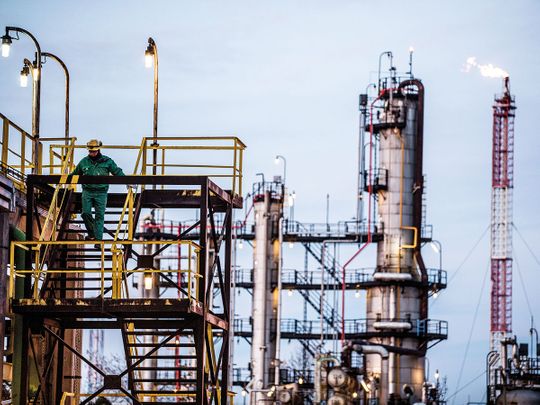
Abu Dhabi: Rising coronavirus cases continue to keep oil prices in the low $40 range, as oil markets worry on the potential of a second wave, which could take a hit on demand.
Oil prices on Friday saw Brent closing on $43.14 – a weekly fall – with West Texas Intermediate (WTI) on $40.59, as both benchmarks see continued stability at that price range. But, with COVID-19 showing no signs of abating until a vaccine is found, prices find themselves with little momentum to break beyond their current levels, which have rallied since May on Opec+ production cuts and the gradual reopening of global economies.
“Supply-side adjustments from Opec+ and other market-oriented producers, such as the US shale patch, will help to push the oil market into deficit in H2 2020 (second half of 2020) after an enormous build in inventories in Q2 2020 (second quarter),” noted Edward Bell, senior director for market economics at Emirates NBD.
“However, from here on out the impact on balances from the supply side will be more muted… From August production from Opec+ countries is actually set to increase as the deep level of cuts is tapered. Another sizeable cut to output appears unlikely to us, even if prices stumble,” he added.
Bell said the bank’s forecast for oil prices would be above $42 for 2020, with the oil market remaining volatile from the virus and its associated risks.
“At $42.55/b for Brent futures oil prices will still be down by 34 per cent year on year and well below levels that allow governments across MENA (Middle East and North Africa to run balanced budgets.
“Downside risks to our forecast remain considerable with a potential for a relapse into lockdowns a major threat to the sustainability of oil demand,” he added.
And with oil prices unlikely to go higher, they could find themselves going lower should the coronavirus numbers worsen.
“With COVID-19 setting new grim records in daily new infections in the US, and expanding in other key markets in the Americas and Asia, the demand section most affected is road fuels,” said Louise Dickson, Rystad Energy’s oil markets analyst. “Less transport of people and cargo on the roads translates into mounting pressure for gasoline demand specifically,” she added.
“With the Opec+ meeting now out of the way and with more production coming online from August, a dip in demand can really play a pivotal role in pushing recovering prices back to lower levels.”








